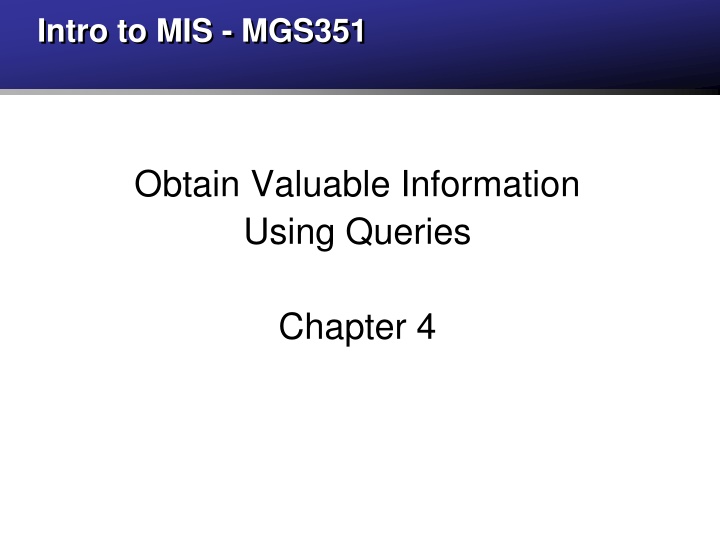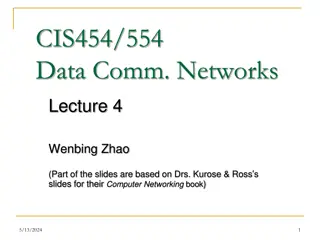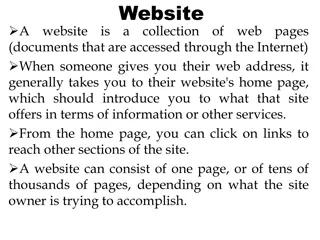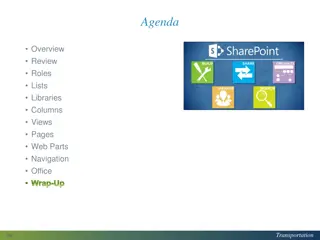
Unlocking Valuable Information Using Queries in MIS Chapter 4
Explore the power of queries in MIS Chapter 4 to obtain valuable information efficiently. Learn about query criteria like, In, And, Or, Between, Null, Relational Operators, Grouping, Sorting, Advanced Query Topics, and more. Discover how queries can be used to ask questions, build reports, and forms.
Download Presentation

Please find below an Image/Link to download the presentation.
The content on the website is provided AS IS for your information and personal use only. It may not be sold, licensed, or shared on other websites without obtaining consent from the author. If you encounter any issues during the download, it is possible that the publisher has removed the file from their server.
You are allowed to download the files provided on this website for personal or commercial use, subject to the condition that they are used lawfully. All files are the property of their respective owners.
The content on the website is provided AS IS for your information and personal use only. It may not be sold, licensed, or shared on other websites without obtaining consent from the author.
E N D
Presentation Transcript
Intro to MIS - MGS351 Obtain Valuable Information Using Queries Chapter 4
Chapter Overview Query Criteria Like, In, And, Or, Between, Null, Relational Operators (>,<,>=,<=,=,<>) Grouping and Sorting Avg, Min, Max, Count, Sum Advanced Query Topics Unmatched and Parameter Queries, Concatenation, IIf, Update Queries
Queries Allow you to ask questions (queries) about data in the database. Select, Crosstab, Make Table, Update, Append, Delete Often used to build reports and forms Datasheet, Design and SQL view
How many Seniors are in MGS351? (Better way)
How many Fr, So, Jr and Sr students are in MGS351?
Who has a last name beginning with the letter M? * represents anything (many characters) or nothing ? represents any single character
Who has a first name beginning with the letter S? * represents anything (many characters) or nothing ? represents any single character
Who has a last name six characters long? * represents anything (many characters) or nothing ? represents any single character
Who is a Jr or Sr and a (MG) major with a grade of A or B?
Unmatched Queries Identifies records in one table that don t exist in another What products have never been ordered? What students haven t registered?
Parameterized Queries The criteria is dynamic every time a parameterized query is run, the user is prompted to enter the criteria value they want to use.
What is the class and major for a specific person number?
Concatenation Can be used to combine multiple query fields together, or to add extra formatting in a query. What expression will generate this output? Student name (Major) David Murray (MG)
Concatenation Example Ampersand symbol & is used to combine fields and text. All text should be enclosed in double quotes
HW3 - Ch 5 Applied Step 4 GPA: 3.7 Grade: A GPA: 3.7 Grade: Space Space Space A Space
IIF Expression Use to conditionally evaluate data, and dynamically generate output based on it. In other words one single query expression can be created to do the following: Display Underclassman for freshman and sophomore students and Upperclassman for junior and senior students
IIF Expression IIF(logical expression, output if true, output if false) IIF(Class field is equal to FR or SO, display Underclassman, otherwise display Upperclassman)
Update Queries Used to update specific records with data, based on the given criteria. Update the Major 1 field in the database to Management where it currently is MG
IIF Expression and Update Query Create one single query expression to do the following: Update the performance field in the database for each student based on their course grade. Satisfactory Marginal Unsatisfactory [A, A-, B+, B, B-, C+, C] [C-, D] [F]
IIF Expression and Update Query Separate Query with IIF Expression (Performance) [TableName].[Fieldname] is the syntax used to refer to fields in other tables or queries
Form Based Criteria Powerful and User Friendly!
Form Based Criteria Powerful and User Friendly! Make sure to save the form first so that the control names show up in the expression builder.
Quick Review The most common type of query is called a a. Dynaset query b. Select query c. Query by Example query d. Relational query
Quick Review Which of the following criteria will return the record Anderson? a. Like Ander? b. Like Ander* c. Both a and b d. Neither a nor b
Quick Review Which function can be used instead of the OR criteria? a. Between b. In c. Not Null d. IIF
Quick Review All are valid functions for grouped queries except a. Sum b. Count c. NPV d. Min
Quick Review If your balance is 10,000, what is the result of this expression? IIF(Balance >= 10000, .035, .0275)
Quick Review True / False You can modify the query results, but the changes will not be reflected in the underlying table.






















